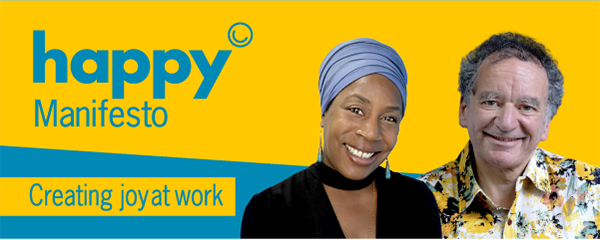
The Happy Manifesto: 10 Steps to a Great Workplace
The Happy Manifesto is Henry Stewart's call for change in the way we work. Find out his 10 steps to a great workplace in his new book and his latest blog.
Here you can find all of Happy’s blog posts, covering our Excel hints and tips, ideas for creating happy workplaces, and ways to be more productive at work — and more.

The Happy Manifesto is Henry Stewart's call for change in the way we work. Find out his 10 steps to a great workplace in his new book and his latest blog.

People don’t resist change, they resist being changed. See how Marion Janner’s approach to change in the workplace was too good to resist.

At TrainingZone Live this morning, Michele Owens of the Olympic Delivery Authority gave an interesting example of how people reacted to different approaches.

The core of the problem, it seems to me, is that the bankers bonuses that we hear so much about are never based on the amount of money made for the customer, but instead on the amount of money made for the bank.

At a recent meeting of training providers we did an exercise on what was distinctive about each of our company’s approaches. As well as our learner focus I talked about making learning about computers enjoyable. The response from my colleague was interesting: “You mean, that’s for real? I thought it was just hype. How do you make IT training enjoyable?”

I was very struck today by an article in a local London paper, the Islington Tribune, on the special customer service award given to a local corner shop.

Think about the people you work with - those who work with you and your customers and your suppliers. Where could you make more of a real personal connection that would make life better for you and them?

People work best when they’re happy at work. That principle is the core of everything we do at Happy (a training business in London, UK). Think about whether you agree with it. If you do, and I find over 95% of people do, then what should be the key focus of management? By simple logic, it should clearly be creating an environment where people are happy and feel good about themselves.
I often say that our most radical belief at Happy is this: you should decide who should manage people based on how good they are at managing people.
Imagine one of your most valued members of staff comes to you and says, 'I love my job. I love the people I work with. I am even happy with what I am being paid. But I can't stand my manager.'